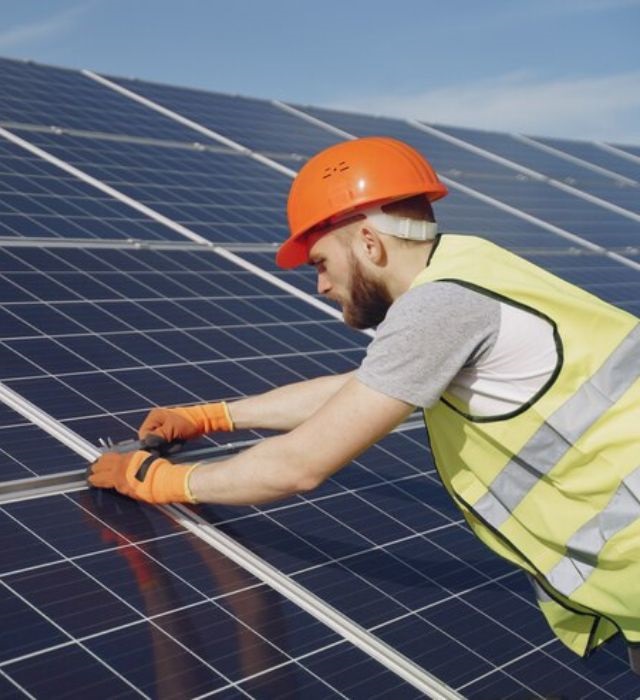
In recent years, solar energy has gained popularity in Texas as a reliable and sustainable source of electricity. However, a number of myths have also emerged that can misinform consumers. In this article, we clear up the most common misconceptions and highlight the realities of solar power in the Lone Star State.
Solar Energy in Texas: A General Context
Texas is one of the leading states in the adoption of solar energy in the United States, thanks to its abundant solar radiation and favorable policies. In 2023, Texas was positioned as one of the largest generators of solar energy in the country. Despite this progress, there are still misconceptions about this technology. Below, we will analyze the myths and realities surrounding solar energy.
Myth 1: “Solar energy does not work on cloudy days or in bad weather”.
Fact: Solar power is effective even in variable weather conditions.
Although solar power relies on sunlight, modern solar panels are designed to capture energy even on cloudy days. While generation may be lower than on a sunny day, solar systems still produce electricity thanks to advanced technology that allows them to take advantage of diffuse light.
In Texas, where the weather tends to be sunny most of the year, cloudy days represent a tiny fraction. In addition, many installations have solar batteries that store energy for later use, ensuring a constant supply.

Myth 2: “Solar panel installation is too expensive”.
Fact: The upfront costs are offset by incentives and long-term savings.
It is true that installing a solar system requires an upfront investment, but in Texas there are multiple incentives that significantly reduce costs. These include:
- Federal tax credit: Currently, the tax credit covers up to 30% of the installation cost.
- State and local programs: Some municipalities and utilities offer additional rebates.
- Net metering: This program allows homeowners to sell excess energy generated to the electricity supplier, further reducing bills.
With these benefits and monthly electricity savings, many solar installations pay for themselves within 5 to 10 years, and panels typically last more than 25 years.

Myth 3: “Solar panels are not gd for the environment because thooey are difficult to recycle”.
Fact: The solar industry is developing solutions for sustainable recycling.
This myth is rooted in legitimate concerns about e-waste management. However, solar panels are designed to last for decades, and when the time comes to replace them, recycling programs exist that recover valuable materials such as silicon, glass and metals. In addition, the environmental benefits of reducing carbon emissions far outweigh the potential impact of the waste.

Myth 4: “Solar panels only work for large homeowners”.
Fact: Solar systems are adaptable to different types of properties.
One of the biggest advances in the solar industry is the versatility of its systems. Whether you live in a large house in the country or an urban dwelling with a small roof, there are custom solutions. Some options include:
- Ground-mounted systems: Ideal for rural properties with available space.
- Community systems: Perfect for those who cannot install panels on their own roofs but want access to shared solar power.
Also, smaller homes tend to require fewer panels, reducing upfront costs.

Myth 5: “Solar energy is unreliable because it depends on the sun”.
Fact: Solar power is more reliable than many believe.
Unlike traditional sources of electricity, solar power is not subject to interruptions caused by fluctuations in fuel prices or centralized infrastructure failures. In Texas, combining solar panels with batteries ensures a stable power source even during blackouts or storms.
During the historic winter storm of 2021, many owners of solar systems with storage were able to keep their homes powered while the conventional power grid failed.

Real Benefits of Solar Energy in Texas
In addition to debunking myths, it is important to highlight the tangible benefits of going solar in Texas:
1. Reduced energy costs
With fluctuating electricity rates in Texas, solar systems offer a predictable and cost-effective solution for homeowners.
2. Contribution to the environment
Solar energy produces no carbon emissions, which helps combat climate change and improves air quality.
3. Increased property value
Studies show that homes with solar systems have a higher market value.
4. Energy independence
With a solar system, homeowners are less dependent on the electric grid and its fluctuations.

Considerations for Installing Solar Power
If you are considering investing in solar energy, here are some steps to follow:
1. Initial assessment: Analyze your home’s energy consumption and available space.
2. Consult with experts: Work with companies like ORIUS that offer personalized advice and solutions tailored to your needs.
3. Explore local incentives: Learn about tax benefits and programs available in your area.
4. Maintain your system: Although solar panels require little maintenance, regular cleaning can optimize their performance.

In conclusion, solar energy is a clean, sustainable and cost-effective alternative that offers countless benefits to Texas residents. Despite common myths, reality shows that technological advances and state incentives have made this option a smart investment for homes and businesses.
At ORIUS, we are committed to helping you take the step toward a brighter, more sustainable future. If you have questions or are ready to explore the possibilities of solar energy, contact us today!
